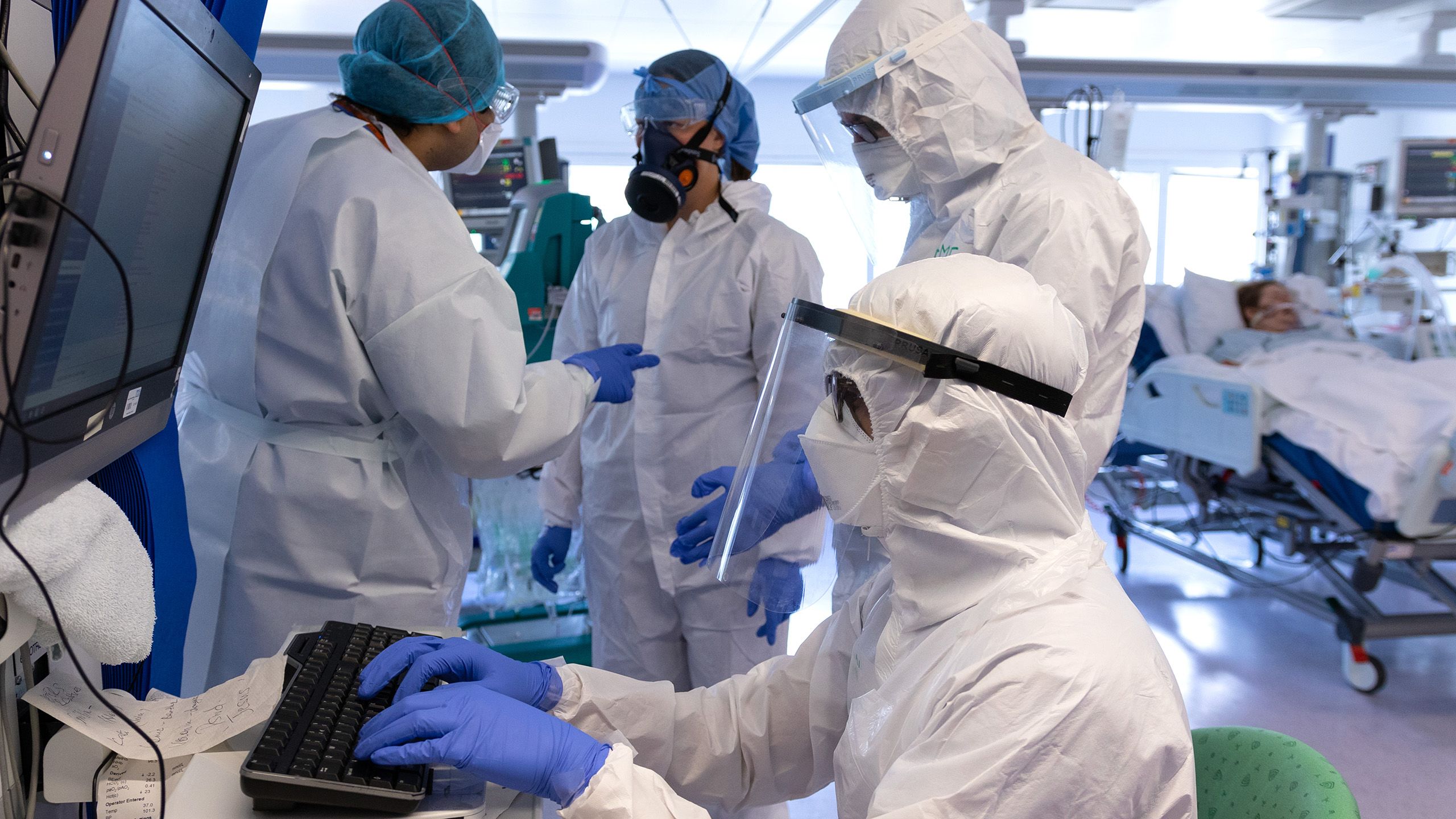
Charlotte Moran
A critical analysis of policy initiatives, procurement guidance and legal frameworks from 2000 onwards that affect the relationship between NHS and Independent Sector Providers (ISPs). Databases used; OneSearch, PubMed, British Medical Association, Parliamentary Archives, National Audit Office, GOV.UK and The King’s Fund.
Papers, procurement policy and processes were reviewed to consider if the pattern/methodology of procurement, and mobilisation of services had changed from pre-COVID, to during-COVID. The impact on healthcare of these differing policies and processes were considered. Review of procurement processes and resultant contracts and their use has taken place.
From this research it has been concluded that under-utilisation of ISPs during the pandemic is due to numerous causes; e.g. only certain patients could be accommodated in the Independent Sector (IS), IS consultants were redirected into NHS care.
Finally, the plan for future procurement of services as set out in the new Health and Care Bill (HCB) were considered and conclusions drawn as to the subsequent affects to the relationship between the NHS and ISPs post-COVID.
This research shows that choice and competition agendas are changing. Relationships between NHS and ISPs are developing and the new HCB and proposed procurement regime is expected to continue this direction of travel.

Charlotte Moran
How differing procurement processes, used during the COVID-19 pandemic, have and will continue to affect the relationship between NHS and Independent Sector Provision Post-COVID?
I would like to thank Dr Mary Guy for her support and constructive comments throughout this process.
Introduction
Papers, procurement policy and processes were reviewed to consider if the pattern/methodology of procurement, and mobilisation of services had changed from pre-COVID, to during-COVID. The impact on healthcare of these differing policies and processes were considered. Review of procurement processes and resultant contracts and their use has taken place.
Methodology
A critical analysis of policy initiatives, procurement guidance and legal frameworks from 2000 onwards that affect the relationship between NHS and Independent Sector Providers (ISPs). Databases used; OneSearch, PubMed, British Medical Association, Parliamentary Archives, National Audit Office, GOV.UK and The King’s Fund.
Background
During the pandemic, the need for additional capacity to cope with the emergency demand and planned elective care restoration required different policies and processes to drive an urgent response.
A pandemic is considered a national incident and as such is managed under the governance of NHS England’s Emergency Preparedness, Resilience and Response Framework (EPRRF); giving NHS England emergency powers for national decision-making and take a Command and Control approach for the delivery of a strategic response to manage this incident.(1)
Pre-COVID 19 Procurement
The Health and Social Care Act (HSCA) 2012 states that parties must meet procurement requirements surrounding competitive tendering for the provision of services.(2) In 2015 the EU Procurement Directives came into force; the UK government prioritised the Public Contracts Directive (PCD 2015)for early application.(3) The shift created a focus on undertaking due process to get the best supplier and best tender in accordance with sound commercial practice. This includes the obligation to tender contracts in the Official Journal of the European Union (OJEU)(2, 3, 4) and to ensure any contract for NHS services satisfies the ‘threefold objective(5):
1) Securing the needs of people who use the services
2) Improving the quality of the services
3) Improving efficiency in the provision of the services’.
The NHS is duty bound to treat all providers equally and non-discriminatorily and it must act in a transparent way, thus the scope to procure services without competitive tendering is limited, except where only one provider is available(4) or where adopting anti-competitive behaviour:
1) aids delivery of integrated services
2) is in the interest of the patient
3) encourages co-operation between service providers improves the quality of services.(5)
During-COVID 19 Procurement
In March 2020, NHS England signed a contract with independent sector providers whereby they would make all their facilities available to cope with the required NHS capacity increase during the pandemic, with the NHS covering operating costs. The ISP contract was expected to reduce the unmet need by increasing independent sector provision for NHS patients.(6)
Service demands of the pandemic meant the government used a procurement framework to obtain services to the value of £10.6bn awarded without guarantee of activity without competition.(7)
This contract established a guaranteed income stream and avoided potential financial loss caused by the pandemic. The contract superseded all existing contracts between the NHS and ISPs, allowing ‘provision of full hospital capacity and services including acute bed capacity, facilities, diagnostics, staffing, management and full organisation capability’.(7,9)
In 2021 the Centre for Health and the Public Interest thinktank called for the contracts to be disclosed and stated their assumption that purchased capacity was being underused – querying the value for money of ISPs. Disclosed information shows many independent hospital beds went unfilled, leaving large undisclosed amounts being spent without clear outcomes. ISPs treated only 0.08% of the UKs COVID-19 patients however, the contract delivered “1,200 ventilators and around two million consultations, tests, operations and chemotherapy sessions”. Without contract specifications it is impossible to understand whether this is value for money.(8,9)
Post-COVID 19 Procurement
The new Health and Care Bill (HCB), aims to reduce the bureaucracy and costs in the procurement process and remove the barriers that prevent integration.(10) This clearly highlights a movement towards a culture of collaboration not competition. Primarily it intends to procure in the best interests of patients, taxpayers and the population.
The HCB also revokes the NHS Procurement, Patient Choice and Competition Regulations 2013 (No.2). The new regulations “NHS Provider Selection Regime” ensures transparency and fairness in relation to procurement, ensuring that compliance can be verified. (11) The new HCB also removes a financial threshold regarding contracts that go to tender creating a more transparent competitive market.(10)
Discussion
The relationship between the NHS and independent health care is most-beneficial when it is collaborative or even symbiotic rather than competitive.(12, 13)
The Royal College of Surgeons have clearly stated that dealing with the increased waiting list on the NHS due to COVID-19 could take years to address, and ISPs will be crucial in this. The relationships and understanding that the NHS and ISPs have developed through the pandemic will become invaluable over the long term.(14)
NHS procurement during the pandemic has been subject to scrutiny by the National Audit Office (NAO). Despite the contract delivering cohesion, the NAO still see a real need to adhere to procurement processes, stating a need for transparency and consistency within the contracts. The NAO scrutinised the methods of procurement used during the pandemic, this could mean that new methods spawned from this could cause future tension. (15)
Conclusion
Until the impact of the award and implementation of the contracts used during the COVID-19 pandemic are disclosed and fully reviewed, little assurance can be given that this procurement methodology and mobilisation process will lead to a more cohesive symbiotic system relationship which delivers value for money and high-quality care.
As a result of the pandemic the relationship between the NHS and ISPs has created a system of collaboration not rivalry. Collaboration occurred on many different levels including between NHS England and local commissioners which enabled better communication and streamlined procurement processes. (16)
Recovery from COVID-19, requires system planning and delivery with integrated working, cross-organisational actions and collaborative efforts between the NHS and ISPs working within budgets to provide high-quality services. It is hoped this system working will ensure services are affordable within the collective financial budgets.(16)
References
(1) NHS England National Emergency Preparedness, Resilience and Response Framework. England: NHS England; 2013 21/03/2013. (2) Health and Social Care Act 2012, (27/03/2012, 2012). (3) Public Procurement Policy: Public Contracts Regulations 2015 UK: GOV.UK; 2015 [updated 08/01/2021. Available from: https://www.gov.uk/guidance/public-sector-procurement-policy#public-contracts-regulations-2015. (4) Collins B. Procurement and Competition rules: Can the NHS be exempted? Report. England; 2015 18 March 2015. (5) Smith S, Owens D, Heard E. New procurement legislation for English Healthcare Bodies - The National Health Service (Procurement, Patient Choice and Competition) (No.2) Regulations 2013. Public procurement law review. 2013;4:NA109-NA15. (6) Stevens S, Amanda P. Next steps on NHS response to COVID-19: Letter from Sir Simon Stevens and Amanda Pritchard. In: Chief executives of all NHS trusts and foundation trusts, CCG Accountable Officers, Networks GpaPC, services Poch, editors. UK: NHS England; 2020. p. 17.(7) The role of private outsourcing in the COVID-19 response. British Medical Association. 2020:17. (8) Ryan S, Rowland D, McCoy D, Leys C. For Whose Benefit? NHS England's contract with the private hospital sector in the first year of the pandemic. UK: Centre for Health and the Public Interest; 2021 September 2021. (9) Limb M. Covid-19: Private hospitals “fell well short” in delivering care during the pandemic, says report. BMJ. 2021:n2471. (10) Calder K, Drabu H, Burnett C, Hocking S, Robertson A, Fletcher V. Loosening the ties that bind: new NHS procurement regime proposed. DAC BEACHCROFT. 2021:1. (11) Health and Care Bill. In: Care DoHaS, editor. UK: The House of Lords; 2021. p. 256. (12) The NHS Constitution for England UK: GOV.UK; 2021 [updated 01/01/2021. Available from: https://www.gov.uk/government/publications/the-nhs-constitution-for-england/the-nhs-constitution-for-england#patients-and-the-public-your-rights-and-the-nhs-pledges-to-you (13) Guy M. Between 'going private' and 'NHS privatisation': Patient choice, competition reforms and the relationship between the NHS and private healthcare in England. Legal studies (Society of Legal Scholars). 2019;39(3):479-98. (14) Hare D. The NHS' relationship with private providers 'has changed before our eyes'. Health Service Journal. 2020. (15) Investigation into government procurement during the COVID-19 pandemic: HC 959. UK: U. K. Parliament National Audit Office; 2020 18/11/2020. (16) NHS Long Term Plan. NHS England; 2019 August 2019.
Slide 1 image (max 2mb)
Slide 1 video (YouTube/Vimeo embed code)
Image 1 Caption
Slide 2 image (max 2mb)
Slide 2 video (YouTube/Vimeo embed code)
Image 2 Caption
Slide 3 image (max 2mb)
Slide 3 video (YouTube/Vimeo embed code)
Image 3 Caption
Slide 4 image (max 2mb)
Slide 4 video (YouTube/Vimeo embed code)
Image 4 Caption
Slide 5 image (max 2mb)
Slide 5 video (YouTube/Vimeo embed code)
Image 5 Caption
Slide 6 image (max 2mb)
Slide 6 video (YouTube/Vimeo embed code)
Image 6 Caption
Slide 7 image (max 2mb)
Slide 7 video (YouTube/Vimeo embed code)
Image 7 Caption
Slide 8 image (max 2mb)
Slide 8 video (YouTube/Vimeo embed code)
Image 8 Caption
Slide 9 image (max 2mb)
Slide 9 video (YouTube/Vimeo embed code)
Image 9 Caption
Slide 10 image (max 2mb)
Slide 20 video (YouTube/Vimeo embed code)
Image 10 Caption
Caption font
Text
Image (max size: 2mb)
Or drag a symbol into the upload area
















Image description/alt-tag
Image caption
Image link
Rollover Image (max size: 2mb)
Or drag a symbol into the upload area
















Border colour
Rotate
Skew (x-axis)
Skew (y-axis)
Image (max size: 2mb)
Or drag a symbol into the upload area
















Image description/alt-tag
Image caption
Image link
Rollover Image (max size: 2mb)
Or drag a symbol into the upload area
















Border colour
Rotate
Skew (x-axis)
Skew (y-axis)
Image (max size: 2mb)
Or drag a symbol into the upload area
















Image description/alt-tag
Image caption
Image link
Rollover Image (max size: 2mb)
Or drag a symbol into the upload area
















Border colour
Rotate
Skew (x-axis)
Skew (y-axis)

